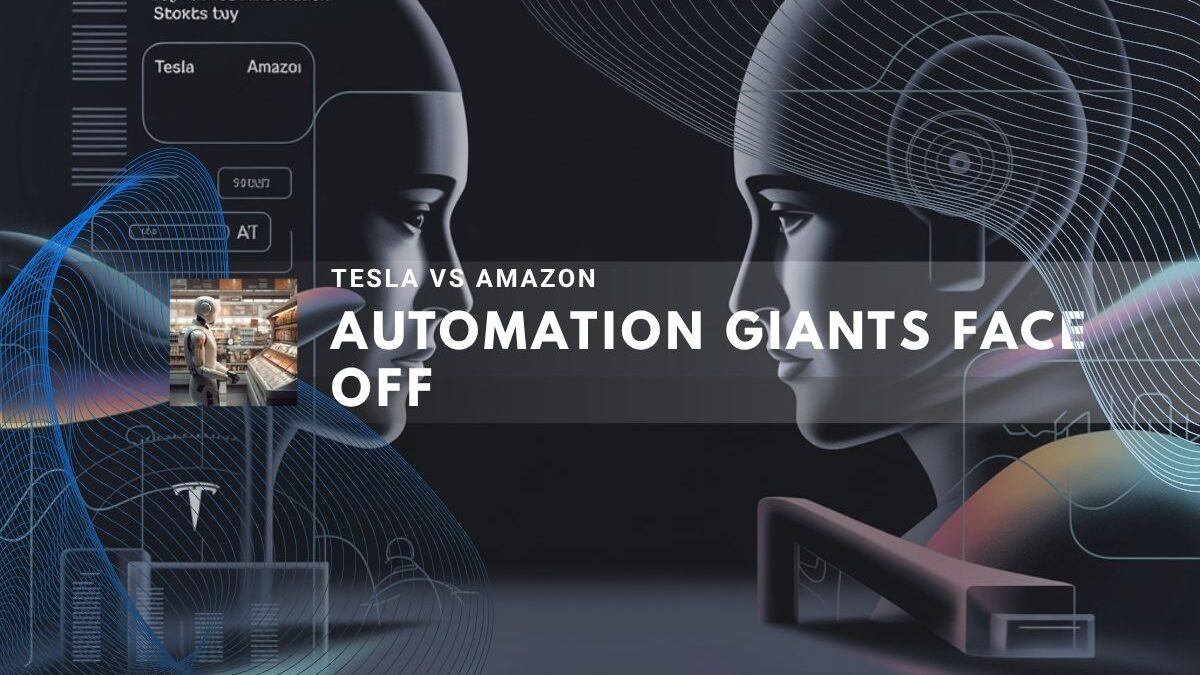Tesla and Amazon are leaders in automation but operate on different timelines and strategies. This article provides an accurate, up-to-date comparison of their automation efforts to help investors make informed decisions.
Tesla’s Automation Ambitions and Production Challenges
Tesla is focusing on two main automation fronts: Full Self-Driving (FSD) vehicles and the humanoid robot, Optimus.
- Optimus Production Timeline:
- Tesla aims to begin production of Optimus in late 2026 or early 2027, with the Optimus V3 production-intent prototype expected to be unveiled in Q1 2026. Early 2025 targets of producing several thousand units have been scaled back significantly to about 2,000 robots due to engineering challenges, particularly with dexterous hand and forearm designs.[3][8][11][12]
- FSD Progress and Roadmap:
- Tesla’s supervised FSD fleet has surpassed nearly 5 billion miles driven, showing improved safety performance (six times safer than human drivers under supervision), but unsupervised, fully autonomous driving remains unavailable commercially.[8]
- Market Valuation and Risks:
- Tesla’s valuation stands near a forward P/E ratio of 175x, reflecting high market expectations for successful automation breakthroughs. Risks include technical and regulatory hurdles, supply chain constraints, and the novelty of building a humanoid robot supply chain from scratch.[6][13]
- Supply Chain and Geopolitical Challenges:
- Tesla depends heavily on rare earth magnets and components impacted by global supply restrictions, especially by China, which may affect production costs and timelines.[4]
Amazon’s Proven Automation Implementation and Scale
Amazon has taken a practical approach, focusing on robotics integration in fulfillment centers and AI-driven efficiency:
- Robotics Deployment:
- Over 1 million robots are deployed across more than 300 Amazon fulfillment facilities worldwide, contributing to faster delivery and lower operational costs.[14]
- AI Enhancements:
- Amazon’s DeepFleet AI model has improved robot travel efficiency by roughly 10%, and multifunctional robots like Blue Jay increase warehouse operational flexibility.[15]
- Valuation and Business Impact:
- Amazon trades at a more modest forward P/E ratio between 28 to 35, reflecting proven automation results that generate immediate business value, contrasting Tesla’s developmental stage.[14]
- Workforce and Organizational Challenges:
- Recent workforce reductions raise concerns about internal pushback and possible impacts on automation rollout speed, though momentum continues.[16]
Investment Considerations Between Tesla and Amazon
Investors should weigh these factors:
- Tesla offers potentially transformative automation via FSD and humanoid robots but faces lengthy development timelines, significant engineering risks, and regulatory challenges.
- Amazon delivers scalable, proven automation benefits with immediate financial returns and operational improvements.
- Tesla’s high valuation requires successful execution of its ambitious roadmap to justify current price levels.
- Regulatory uncertainties, competitor progress, and supply chain risks may affect Tesla’s pace.
- Amazon’s organizational and labor dynamics pose risks but are buffered by existing market scale.
| Aspect | Tesla | Amazon |
|---|---|---|
| Automation Focus | Full vehicle autonomy and humanoid robots | Robotics and AI in global logistics |
| Deployment Scale | Small robotaxi fleet, ~2,000 Optimus units targeted | 1 million+ robots operational worldwide |
| Development Stage | Developmental with significant delays | Mature, actively scaling robotics |
| Market Valuation | Very high (~175x forward P/E) | Moderate (~28–35x forward P/E) |
| Risks | Execution, regulation, supply chain | Workforce reductions, internal pushback |
| Timeline for Impact | Mid to long term (production start post-2026) | Immediate and ongoing |
Tesla’s ambitious timeline for Optimus and full automation involves evolving challenges and potential delays, especially concerning robot hand dexterity and supply chain issues. The upcoming Optimus V3 prototype debut in early 2026 is a key milestone to watch for production readiness.
